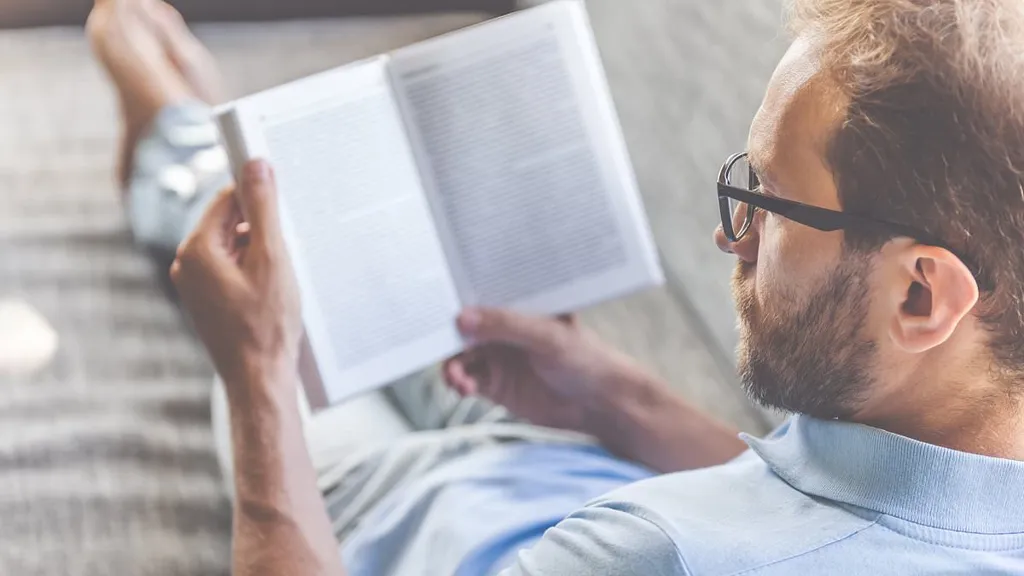They're the trusty pair of spectacles that help you read recipes, write letters or get stuck into the latest crime novel.
But reading glasses could soon be a thing of the past.
Experts have discovered that eye drops, administered a few times a day, can boost near vision with improvements sustained for several years.
And the formula could 'significantly reduce dependence' on reading glasses', scientists said.
Researchers specialising in presbyopia - the common condition that makes it hard to focus on close-up objects and text as we age - wanted to find out if there were any other options available besides glasses or surgery.
They carried out a retrospective study on 766 patients and found the majority could read an extra two, three or more lines on a vision test called a Jaeger chart after using specially formulated eye drops.
The drops contain pilocarpine - a drug that constricts the pupils and contracts the ciliary muscle, which controls the eye's ability to see objects at varying distances.
They also contain diclofenac, a drug that reduces inflammation and the discomfort that pilocarpine often causes.
Many older people have a set of reading glasses they dutifully put on when they open a book. But this could become a thing of the past, experts say.
Patients administered the eye drops twice a day, usually on waking and again approximately six hours later.
An optional third dose could be used if symptoms recurred or additional visual comfort was needed.
The researchers assessed the improvement in how well patients could read the vision chart without reading glasses one hour after the first administration of the drops.
Dr Giovanna Benozza, director of the Center for Advanced Research for Presbyopia in Argentina, said: 'We conducted this research due to the significant unmet medical need in presbyopia management.
'Current solutions such as reading glasses or surgical interventions have limitations, including inconvenience, social discomfort, and potential risks or complications.
'Our most significant result showed rapid and sustained improvements in near vision. One hour after having the first drops, patients had an average improvement of 3.45 Jaeger lines.
'The treatment also improved focus at all distances.'
An improvement in the patients' vision was sustained for up to two years - the length of the study.
The eye drops in the study were administered two times a day, with an extra dose in the evening if required.
Dr Benozza said the eye drops could significantly reduce dependence on reading glasses.
'Importantly, this treatment is not intended to replace surgical interventions, but rather to serve as a valuable solution for patients who need safe, effective, and personalised alternatives and seek freedom from the inconvenience of eyewear,' she said.
'Eye care professionals now have an evidence-based pharmacological option that expands the spectrum of presbyopia care beyond glasses and surgery.'
The findings were presented at the 43rd Congress of the European Society of Cataract and Refractive Surgeons.
THE DIFFERENCE BETWEEN SHORT AND LONG -SIGHTEDNESS?
Both short-sightedness and long-sightedness are common conditions which diminish a person's eyesight.
Short-sighted people (myopic) have difficulty seeing objects at a distance.
They favour objects that are closer to them.
Their vision is clear when looking at things up close, but further away objects become out of focus or blurred.
Short-sightedness (myopia) occurs when the distance from the front to the back of the cornea's curve is too steep.
This forces the light to focus in front of the retina, making objects in the distance appear blurred.
Long-sightedness (hyperopia) is the opposite of this and allows people to see objects clearly at a distance but find it hard to focus on things close to them.
This makes day-to-day activities such as working, reading or watching TV difficult and can result in eye strain. This then produces fatigue and headaches.
Long-sightedness occurs when the distance from the front to the back of the cornea's curve is too steep.
